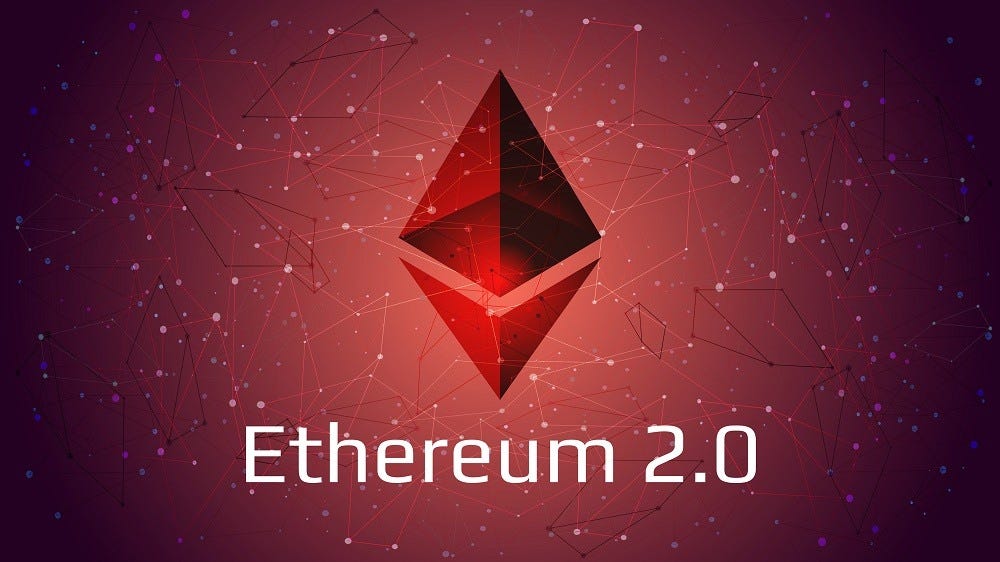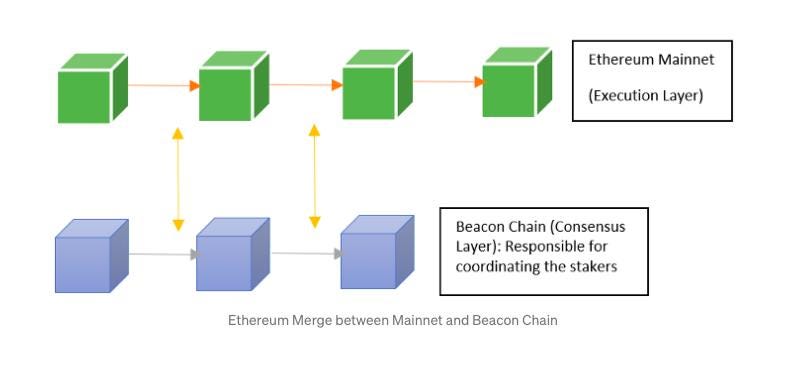[ad_1]
The emergence of Ethereum 2.0 after the famous “Ethereum Merge” was one of the most important and anticipated developments within the web3 ecosystem. The Merge is an enhancement to the Ethereum blockchain, which drives developments in the cryptocurrency industry. The Merge was the union of Ethereum’s new proof-of-stake consensus layer, the Beacon Chain, with its original execution layer, the Mainnet, which has been around since the platform’s inception. It made it unnecessary to use energy-intensive mining and allowed the network to be protected using staked ETH instead. More scalability, security, and sustainability made it a very exciting step in bringing the Ethereum goal to life.The Ethereum Merge changed Ethereum’s proof-of-work (PoW) to proof-of-stake (PoS) security mechanism, which in turn had a huge influence on the blockchain’s cryptoeconomics and the cryptocurrency market.

WHAT EXACTLY HAS CHANGED
Because Ethereum is a decentralised cryptocurrency, organisations like banks are not required to approve transactions before they take place on its network. Previously, transactions were approved using the PoW consensus method, which was mostly carried out by miners. The first miner to complete a complicated mathematical challenge would be chosen as the validator. Miners would compete to solve these riddles utilising a vast infrastructure of cutting edge computer technology. Crypto farms, which are enormous warehouses filled with rows of computers that would solve the problems, were essentially the only source of power for this approach.There was, however, one major issue: these mining farms were energy hogs. As a result, one of the biggest criticisms of the cryptocurrency industry was that they occasionally consumed more electricity than entire nations, which raised serious questions about their ability to maintain the environment.
the switch to the PoS consensus process and “The Merge.” Although the new idea would eliminate the need for miners and mining farms, Ethereum would still be a decentralised platform. Instead, a validator will be chosen at random by an algorithm from a group of individuals who have “staked” (basically, pledged at least 32 Ethereum tokens on the network) their money. As a result, the Ethereum network would no longer require any miners.
MERGING WITH MAINNET
Ethereum Mainnet was protected by proof-of-work from its inception until The Ethereum Merge. This made it possible for the Ethereum blockchain that we are all accustomed to — complete with transactions, smart contracts, accounts, etc. — to be created in July 2015.
Throughout the development of Ethereum, programmers planned for the eventual switch from proof-of-work to proof-of-stake. The Beacon Chain was established as a second blockchain that operates concurrently with Mainnet on December 1, 2020.
Transactions on the Mainnet were not initially processed by the Beacon Chain. Instead, it was deciding on active validators and their account balances in order to obtain agreement on its own state. It was time for the Beacon Chain to agree on actual data after lengthy testing. The Beacon Chain took over as the consensus engine for the whole network’s data after The Merge, including execution layer transactions and account balances.
The Beacon Chain was formally used as the basis for block production after the Merge. Blocks can no longer be created validly by mining. Instead, the proof-of-stake validators have taken on this function and are now in charge of processing all transactions for validity and submitting blocks.
The Merge did not erase any history. The complete transactional history of Ethereum was integrated when Mainnet and the Beacon Chain converged.
PoW To PoS
By combining PoW and PoS, all components of both models will be used. The transition to proof-of-stake (PoS) will fundamentally alter the proof-of-work (PoW) consensus method in terms of the economics of the validating structure, the energy need, and the hardware required for mining. A tried-and-true method of adding new blocks to the blockchain was the PoW technique. Miners employed this strategy to overcome difficult computing problems in order to add blocks. A hello, that is.
For owners of Ethereum, the switch to Ethereum 2.0 is advantageous. Users will pay less for transactions thanks to the changes made by Ethereum 2.0, which will also enable holders with the required amount of ETH to stake their currencies in the network and take on the role of validators. Additionally, apps already running on the Ethereum network may easily switch to Ethereum 2.0 without sacrificing any transaction history or data.
With the introduction of Ethereum 2.0, the PoW mining method will be replaced with staking. As a result, mining as we currently know it will become obsolete, and miners will have to move to staking in order to verify transactions for block rewards and transaction fees.
If the holder bets their Ethereum on the network after the merging, it will provide an annual income of between 4% and 6%. Since the proof-of-stake (PoS) model encourages honest validators and tries to punish dishonest validators and their delegators, by using Ethereum, the network will expand and become more secure.
When everything is said and done, The Merge proves to be a success for Ethereum. It will enable new blockchain-based developments and open up a whole new world for decentralised apps and industry use cases. The most fascinating aspect of these developments is that everyone may take use of them, which was not possible with Web2.0.

What will happen to Eth 2.0
The phrase “Eth2” has been phased out. There is just Ethereum now that “Eth1” and “Eth2” have been combined into a single chain, eliminating the need to distinguish between the two Ethereum networks.
The community has changed these terminology to avoid ambiguity:
The “execution layer,” currently called “Eth1,” is in charge of transactions and execution.
The “consensus layer,” which manages proof-of-stake consensus, is now called “Eth2.”
These terminological changes solely affect naming standards; they have no impact on Ethereum’s objectives or development timeline.

The Merge and the Beacon chain
The Beacon Chain is now officially the replacement consensus layer for the original Mainnet execution layer as of the Merge. Since The Merge, the Ethereum Mainnet is secured by validators, and mining based on proof-of-work is no longer an accepted method of block generation.
Instead, validating nodes that have staked ETH in exchange for the privilege to take part in consensus make the suggested blocks. These improvements pave the way for later scalability improvements, such as sharding.
The Shanghai Update
After the integration, the Shanghai Upgrade will take place. Along with other changes, the upgrade will deal with the separation of code and data, the withdrawal of staked Ethereum on the Beacon chain, and the lowering of Layer-2 blockchain transaction costs.
The usefulness of Ethereum is expected to increase after the upgrade, notably in terms of the gas charge for transactions, which has always been a concern.
New to trading? Try crypto trading bots or copy trading
ALL YOU NEED TO KNOW ABOUT ETHEREUM MERGE was originally published in Coinmonks on Medium, where people are continuing the conversation by highlighting and responding to this story.
[ad_2]
Source link
